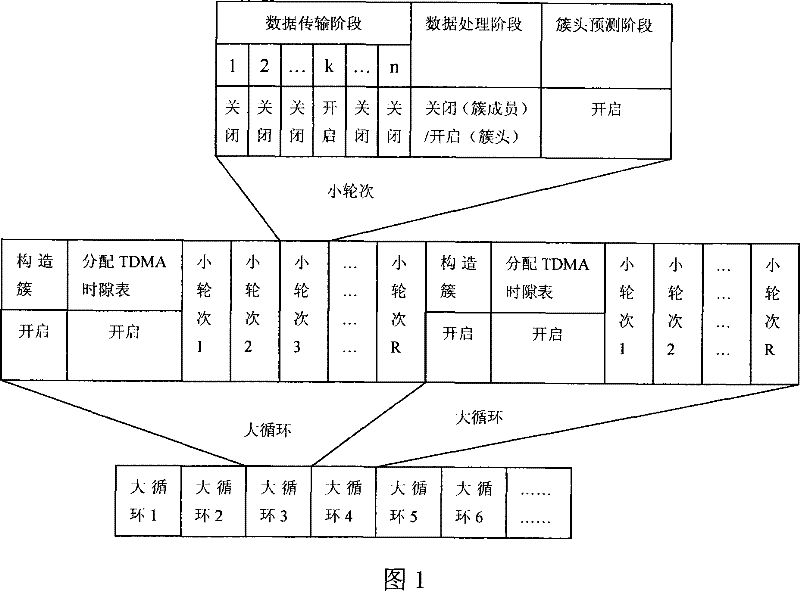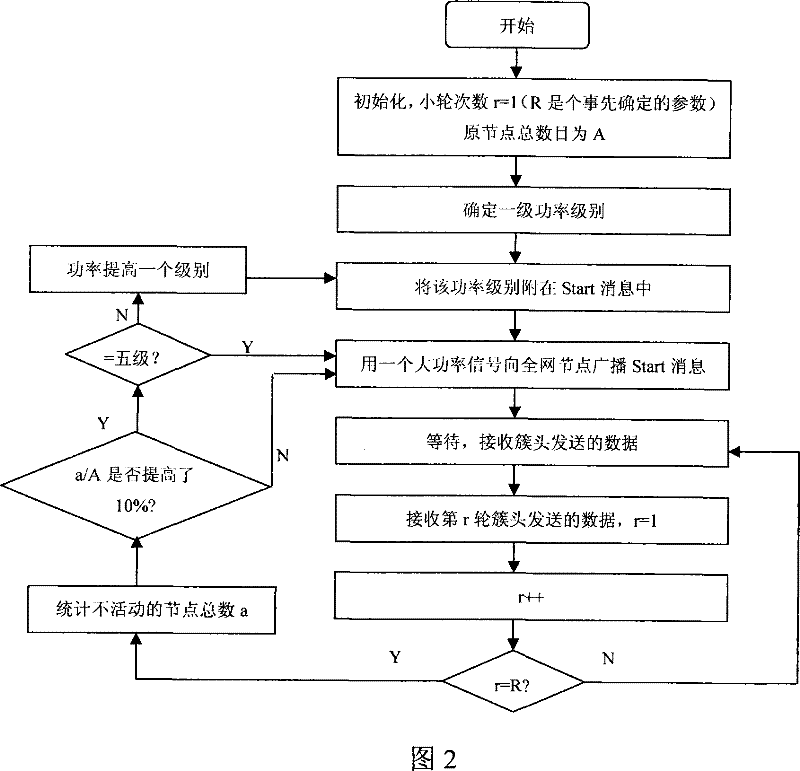Cluster energy saving route algorithm applied in wireless sensor network
A wireless sensor and network technology, applied in wireless communication, energy-saving ICT, data exchange network, etc., can solve problems such as routing energy consumption, and achieve the effect of reducing energy and data transmission delay
- Summary
- Abstract
- Description
- Claims
- Application Information
AI Technical Summary
Problems solved by technology
Method used
Image
Examples
Embodiment Construction
[0027] Such as figure 1 As shown, a wireless sensor network energy-saving routing method based on cluster head prediction and power control; the steps including large cycle and small round operation include large cycle 1, large cycle 2, large cycle 3, large cycle 4, large cycle 5, Large cycle 6 and so on; after each large cycle, the steps of re-constructing clusters and reallocating the TDMA time slot table for transmission; each large cycle is composed of R small round steps, and the small round steps include data collection phase steps, Data processing phase steps and cluster head prediction phase steps.
[0028] Such as figure 2 Shown: Sink node behavior, assuming that the power level of each sensor node is divided into five levels, one level represents the lowest power level, and five levels represent the highest power level. The Start message broadcast by the Sink node after each large cycle needs to include the transmission power value that the sensor node should use ...
PUM
 Login to View More
Login to View More Abstract
Description
Claims
Application Information
 Login to View More
Login to View More - R&D
- Intellectual Property
- Life Sciences
- Materials
- Tech Scout
- Unparalleled Data Quality
- Higher Quality Content
- 60% Fewer Hallucinations
Browse by: Latest US Patents, China's latest patents, Technical Efficacy Thesaurus, Application Domain, Technology Topic, Popular Technical Reports.
© 2025 PatSnap. All rights reserved.Legal|Privacy policy|Modern Slavery Act Transparency Statement|Sitemap|About US| Contact US: help@patsnap.com



